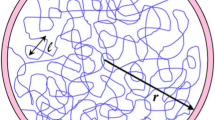Abstract
The efforts to engineer devices to produces conditions suitable for nuclear fusion on earth have made significant leaps and bounds in recent years due to improved technology and engineering methods. Magnetized target fusion, or magneto-inertial fusion, involves the inertial compression of a pre-magnetized plasma, using high magnetic fields to insulate the plasma, thereby allowing slower and lower convergence compression than achievable by inertial techniques alone. One particular form of MTF (suggested by general fusion) involves using an intense pressure wave transmitted through a dense medium, growing in intensity due to focusing, and finally reaching a plasma and compressing it. Our model consists of a spherically symmetric domain with moving boundaries that we solve numerically through a coordinate transformation and a flux-limited finite volume method. Our work ventures towards a proof of concept, both of a mathematical technique to solve nonlinear conservation laws with moving boundaries and of the notion that current designs being considered show potential for successful fusion conditions. Our work also includes a sensitivity analysis to estimate the optimal conditions for such a reactor.








Similar content being viewed by others
References
L. Artsimovich, Controlled Thermonuclear Reactions (Hazell Watson & Viney Ltd., UK, 1964)
M. Laberge, An acoustically driven magnetized target fusion reactor. J. Fusion Energy 27, 65–68 (2007)
M. Laberge, Experimental results for an acoustic driver for MTF. J. Fusion Energy 28, 179–182 (2008)
L. Landau, E. Lifshitz, Fluid Mechanics (Pergamon Press, NY, 1959)
J. Lawson, Some Criteria for a Power Producing Thermonuclear Reactor (Proceedings of the Physics Society, Section B, 1957), p. 70
D. Mansfield et al., Enhancement of Tokamak Fusion Test Reactor performance by lithium conditioning. Phys. Plasmas 3, 1892–1897 (1996)
R.J. LeVeque, Finite Volume Methods for Hyperbolic Problems (Cambridge University Press, Cambridge, 2004)
S.D. Rothman, J.-P. David, J. Maw, C.M. Robinson, K. Parker, J. Palmer, Measurement of the principal isentropes of lead and lead-antimony alloy to \(\sim 400\) kbar by quasi-isentropic compression. J. Phys. D Appl. Phys. 38, 733–740 (2005)
S. Tan, C. Shu, Inverse Lax-Wendroff procedure for numerical boundary conditions of hyperbolic equations: survey and new developments (pre-print)
E. Herbeert, S. Balibar, F. Caupin, Cavitation Pressure in Water (2006) (pre-preint)
V. Suponitsky, A. Froese, S. Barsky, Richtmyer–Meshkov instability of a liquid–gas interface driven by a cylindrical imploding pressure wave. Comput. Fluids 89C, 1–19 (2014)
M.J. Edwards et al., Phys. Plasmas 20, 070501 (2013)
S. Woodruff, A. Macnab, N. Mattor, Adiabatic compression of a doublet field reversed configuration (FRC). J. Fusion Energy 27, 128–133 (2008)
T. Gray, M.R. Brown, C.D. Cothran, G. Marklin, M.J. Schaffer, Stable spheromak formation by merging in an oblate flux conserver. Phys. Plasmas 17, 032510 (2010)
Acknowledgments
Michael Lindstrom would like to thank Westcoast Energy Inc. for a scholarship during this research. Brian Wetton would like to thank NSERC for a research grant. Michael Lindstrom is grateful to Michael Ward and David Seal for insightful discussions, and would also like to express a huge thanks to Randy LeVeque for a nice discussion and for writing such a clear book on the complex subject of numerical methods for hyperbolic conservation laws. The authors would like to thank Aaron Froese of General Fusion for helpful literature references and clarifications, and the reviewers for their extremely helpful and constructive comments in making this manuscript clearer and more accurate; as lead author, not being a plasma physicist, Michael Lindstrom is most appreciative for the insights shared by the reviewers to make the discussions more physically accurate and application-relevant.
Author information
Authors and Affiliations
Corresponding author
Rights and permissions
About this article
Cite this article
Lindstrom, M., Barsky, S. & Wetton, B. Investigation into Fusion Feasibility of a Magnetized Target Fusion Reactor: A Preliminary Numerical Framework. J Fusion Energ 34, 76–83 (2015). https://doi.org/10.1007/s10894-014-9760-z
Received:
Accepted:
Published:
Issue Date:
DOI: https://doi.org/10.1007/s10894-014-9760-z




